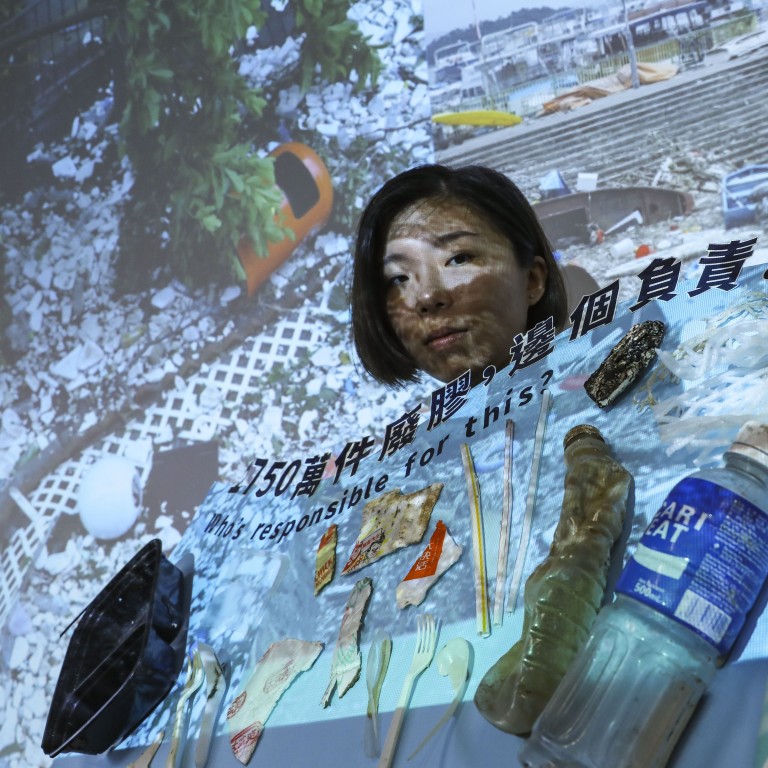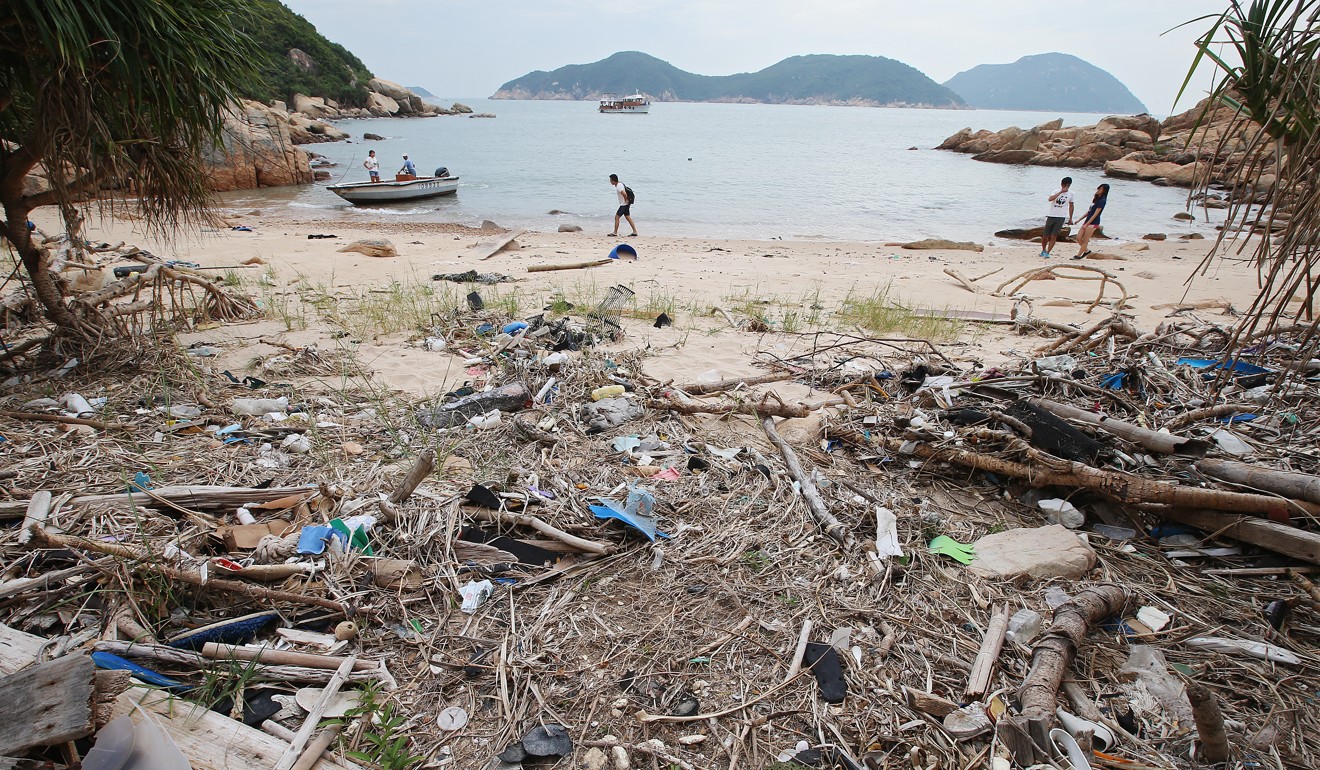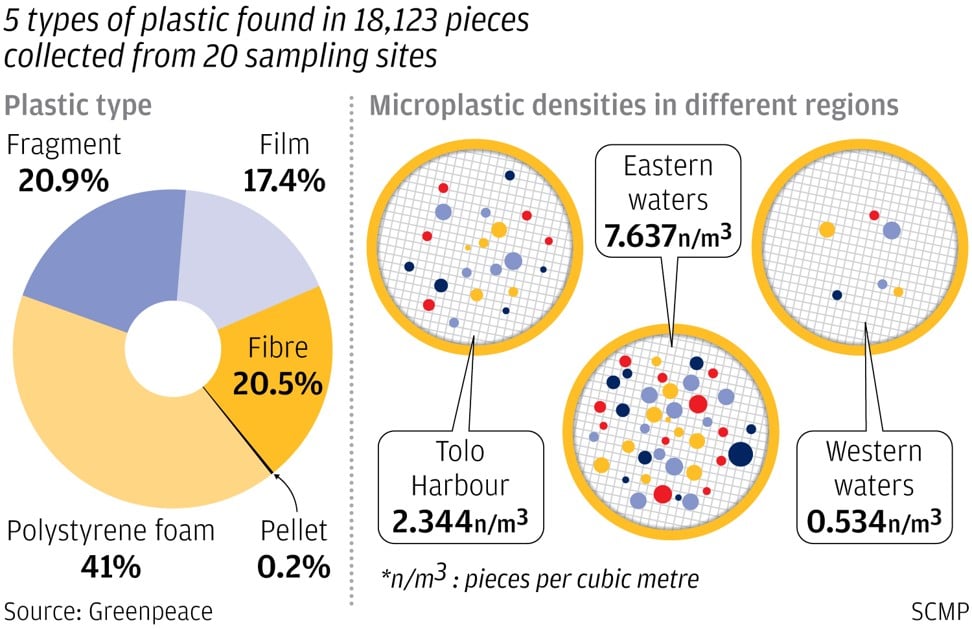
Seas around Hong Kong swamped in microplastics as city’s obsession with unnecessary packaging leads to 11-fold increase in pollution, study shows
- Study carried out by Greenpeace East Asia and Education University focuses on waters around Mirs Bay, Sai Kung and Lantau Island
- Researchers find pollution is most prevalent in eastern areas
The average concentration of tiny plastic particles in Hong Kong’s waters has increased 11-fold in just three years, according to one of the most comprehensive studies ever conducted in the city on the topic.
Greenpeace East Asia and researchers from Education University said the results reflected the “prevalent use of plastic packaging” in Hong Kong.
And they believed most of this plastic pollution was produced locally.
“It is common to see food items wrapped in multiple layers of unnecessary plastic packaging,” Greenpeace campaigner Chan Hall-sion said, adding that such lightweight items were harder to recover and had fewer outlets for recycling.

“The packaging may take just a second to remove but the plastic will stay in the oceans forever.”
Once in the sea, the plastics get weathered and break down into microplastic debris which can be ingested by marine organisms, deforming the digestive systems of fish, Chan said.
Toxic contaminants could also latch on to these particles, ending up in the food chain, ultimately in the seafood humans eat.
From an average concentration of 0.256 pieces of microplastic – small fragments generally less than 5mm in size – per cubic metre of water measured in 2015, the levels last year stood at 3.041 pieces per cubic metre, a difference of 11 times, the study found.
This was the result of analysis from water samples taken at 20 coastal locations in the territory’s western and eastern waters. Specialised mesh nets were used to trawl the sea surface for plastic debris.
Last year, they also added three extra sampling spots in Tolo Harbour, off Tai Po.
Lab analyses found the average concentration in the eastern waters – around Mirs Bay and Sai Kung – and Tolo Harbour to be far higher than that of waters in the west, around Lantau Island.
This observation, Chan said, poured cold water on the conventional belief that most of the city’s marine pollution came from mainland China, flushed down from the Pearl River Delta.
“Tolo Harbour is a semi-enclosed bay surrounded by urban areas, which only flushes water out to sea and rarely in … but concentrations alone were higher than in the western waters,” Chan said. “We can only deduce that most of this microplastic waste is locally produced.”
Tolo Harbour, connected to the sea only by the narrow Tolo Channel, is fed by the Shing Mun and Tai Po rivers.
In total, the researchers collected 18,123 pieces of plastic debris. Around 61 per cent was polystyrene, while 18 per cent was polythene, the type shopping bags and bottles are made of.
More than 17 million pieces of plastic waste flushed into sea each year
Around 60 per cent of microplastic samples were white in colour, while a fifth were transparent with 55 per cent in film form and 20.9 per cent in fragments. Judging from the type and colour, Chan said they could be assumed to be plastics from different food packaging.
She urged the government to set targets and introduce a timetable to reduce single-use plastics, and before that to do more to target excessive packaging.
Manufacturers could be required to reduce use of excessive packaging and to take charge of recycling these materials too, she added.
Education University environmental scientist Dr Lincoln Fok, who led the research, added: “We hope the study can show just how much floating plastic waste there is and how serious it is … to Hong Kong residents.”
The Environmental Protection Department said it planned to commence two studies this year, a two-year baseline survey on marine pollution in Hong Kong waters to better understand microplastics and their sources, and another on the possible control or ban of disposable plastic tableware.
It said it currently had no plans to implement a “polluter pays” scheme for plastic food packaging that would mandate producers to handle proper collection and recycling, but would press ahead with a scheme for plastic bottles.


